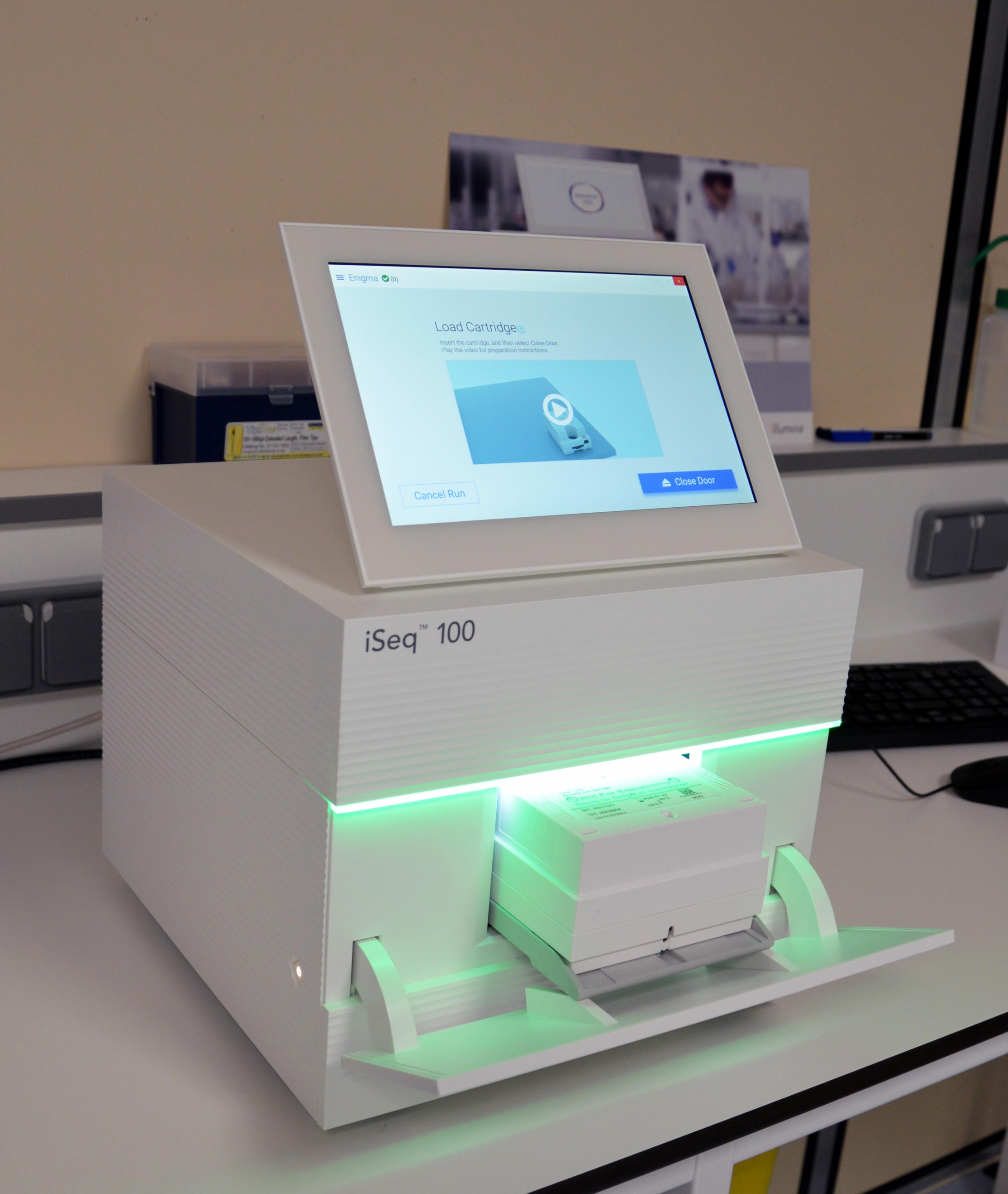
The arrival of Iseq 100
Wishing to significantly develop its research activities in nucleic acids, IRSEA has acquired a DNA sequencer: the ISeq100.
Initiated in 1988, the human genome sequencing project required 3 billion dollars and 15 years of international collaboration. The completion of this project on April 14, 2003 laid the foundation stone for the knowledge that we will later build on our origin, our functioning and our relationship with other living beings.
DNA sequencing is a technique that allows us to "read" the DNA of a living organism mainly in order to identify it or to know the way it functions. It becomes possible to identify in one go the millions of micro-organisms present in a drop of water (meta-genetics or metagenomics) and to observe the origin of the physiological processes leading to the formation of a tumor in a patient (gene expression). In fact, the range of what can be deduced from living organisms by reading DNA is gigantic and, at present, we still do not know to what extent.
Up to now, this technique has allowed us to accomplish many feats in medicine (genetic diseases, personalized medicine, precise characterization of pathogens, etc.) and in other fundamental fields (e.g. evolution and origins of life) or applied fields (e.g. forensics, biotechnology industries). The most spectacular advances were for the sequencers themselves, especially in terms of speed, cost and accessibility: today, the sequencing of a human genome requires hardly more than a few hours and less than 1000 dollars to be completed. Moreover, the devices used, once the size of a man, can now reach the size of a USB key.
Wishing to significantly develop its research activities in nucleic acids (DNA being one of them), IRSEA has acquired the ISEQ100: a small benchtop sequencer that opens up great research opportunities in many projects and that will, I am sure, allow the initiation of many others. It will allow, for example, to study the microbiota of animals which, as we know today, has a great influence on their health and well-being. It will also allow a more precise study of the physiological reactions of our companions in response to a stimulus (pathology, stress, treatment). This will open the door to new possibilities in terms of therapy and will lead to a better understanding of the mechanisms of action of the semiotics used.
A word from Guillaume Vinck, research engineer in the Department of Molecular Biology and Chemical Communication "I am personally delighted to have access to such a technology and I am convinced that the ISEQ100 will be, at IRSEA, the catalyst for great ideas
